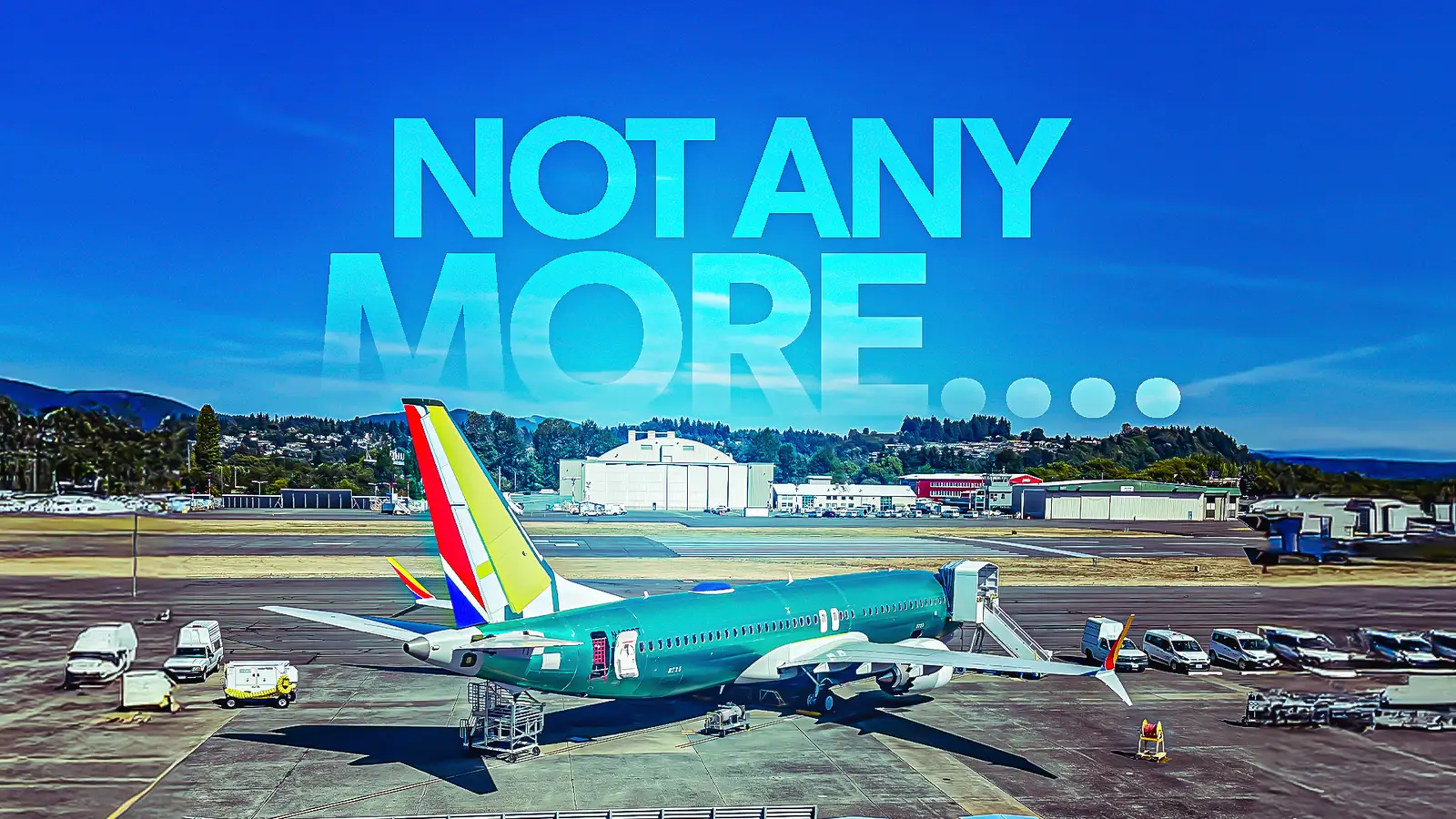Copyright Simple Flying

Few aircraft have changed global travel as profoundly as the Boeing 737. Introduced in the late 1960s, this twin-engine narrowbody family became the foundation of short and medium-haul air travel. Over nearly six decades, it evolved through four generations and served almost every major airline on Earth. For most of its life, it wasn’t just Boeing’s bestseller, it was the world’s most-delivered commercial jet. Although the Airbus A320 family officially surpassed the 737 in total deliveries in 2025, Boeing’s aircraft retains a legacy that is second to none. The 737’s success story is not simply about production numbers; it’s a reflection of smart engineering, global timing, and a deep understanding of what airlines needed most. It shaped airline networks, enabled low-cost travel, and brought jet service to every corner of the world. A Modest Beginning With Grand Ambitions The Boeing 737 began as an ambitious side project in the mid-1960s, when Boeing sought to fill a gap between its larger 727 tri-jet and smaller turboprop competitors. The goal was simple but revolutionary: design a cost-effective, easy-to-maintain jet for short-haul routes. Chief engineer Joe Sutter’s team used proven components from the 727 and 707, mounting two engines under the wings to reduce noise, improve aerodynamics, and simplify ground servicing. The 737’s compact design and low stance were ideal for smaller airports that lacked advanced infrastructure. Airlines quickly realized this meant faster turnarounds and lower costs. Lufthansa became the first customer, followed by United Airlines, giving the aircraft early credibility in both the European and United States markets. Within a few years, the 737-200 variant proved the design’s potential. It could fly farther, carry more passengers, and handle a variety of routes. Its simplicity and ruggedness built a reputation that soon made the 737 the go-to jet for airlines seeking dependable performance at an affordable price. This formula would carry Boeing for decades. Continuous Evolution: From Classic To MAX Unlike a lot of aircraft that may all but fade after a generation, the 737 thrived through constant reinvention. The “Classic” series in the 1980s introduced modern CFM56 engines, new cockpit technology, and better aerodynamics. These improvements made it quieter, cleaner, and far more efficient than its predecessors. Boeing’s ability to update the same fundamental design rather than start from scratch gave airlines an irresistible advantage: fleet commonality. The 1990s brought the 737 Next Generation (NG) family, which featured an upgraded wing, glass cockpit, and expanded capacity. The −800 and −900 models became staples of global fleets, while low-cost carriers like Ryanair and Southwest adopted them as their workhorses. The NG’s range and reliability helped it dominate markets on every continent, often operating in challenging conditions from icy runways in Canada to scorching deserts in the Middle East. Then came the Boeing 737 MAX, Boeing’s answer to Airbus’s A320neo. Equipped with more efficient LEAP-1B engines and aerodynamic tweaks, the MAX promised lower fuel burn and operating costs. Unfortunately, software flaws in the Maneuvering Characteristics Augmentation System (MCAS) led to two fatal crashes and the grounding of the fleet in 2019. This crisis halted deliveries, damaged Boeing’s reputation, and gave Airbus an unprecedented opening to surge ahead. Although the MAX was eventually recertified and returned to service, the incident marked a major inflection point in Boeing’s history. Perfectly Positioned for the Airline Boom The 737 was born at precisely the right time. In the 1970s and 1980s, commercial aviation was entering an explosive period of growth. Airlines sought aircraft that could handle frequent flights between regional hubs while keeping costs low. The 737’s efficiency, short-field performance, and ease of maintenance made it the ideal solution for these emerging needs. By the 1990s, deregulation and the rise of low-cost carriers had transformed global air travel. The 737 became the backbone of that revolution. Southwest Airlines, for instance, built its entire identity on the aircraft, a single-type fleet that simplified operations, training, and maintenance. European airlines like Ryanair followed suit, scaling rapidly across the continent thanks to the aircraft’s reliability and speed on turnaround. The aircraft’s adaptability made it a universal choice. It could serve dense shuttle routes or fly longer sectors with equal ease. Whether in budget airline livery or national carrier colors, the 737 symbolized accessibility and efficiency, a design that brought jet travel to millions of first-time flyers. A Legacy Of Reliability And Global Trust Reliability became the 737’s most powerful selling point. Airlines valued the aircraft not just for performance but for predictability, a trait that meant fewer cancellations, easier maintenance, and higher profits. Crews loved it for its straightforward operation, and technicians appreciated its mechanical simplicity. This reliability built an enormous global support ecosystem. Thousands of pilots, engineers, and suppliers specialized in the 737, creating an industry within an industry. With so many in service, spare parts were always available, and maintenance expertise was everywhere. The aircraft’s presence became so widespread that it was often said a Boeing 737 took off or landed somewhere in the world every few seconds. For passengers, familiarity bred comfort. The interior layout, cabin feel, and even the sound of its engines became synonymous with air travel itself. The 737 was not a luxury item or a niche product; it was the world’s flying standard, bridging generations of travelers and technologies. Production Powerhouse And Global Reach The 737’s dominance extended far beyond its design; it was also a triumph of industrial efficiency. Boeing’s Renton, Washington, facility became a symbol of large-scale precision, producing thousands of aircraft with near-assembly-line regularity. Continuous demand ensured that production rarely slowed, creating one of the longest uninterrupted manufacturing runs in aviation history. The aircraft’s scale meant it could be found in every corner of the world, from small island nations to the busiest international hubs. Airlines valued its ability to operate from shorter runways and handle a wide range of climates, from the Arctic to equatorial heat. Its operational versatility allowed Boeing to sell more than 11,000 units by the early 2020s, an achievement unmatched by any single-aisle competitor at the time. This global reach also reinforced Boeing’s market dominance. The more 737s flew, the stronger its ecosystem became, a self-sustaining loop of training, logistics, and customer loyalty that made the jet the safe and economical choice for decades. A Shifting Skyline: Challenges, Competition, And Legacy After decades of unchallenged dominance, the Boeing 737 program faced its most turbulent period in the late 2010s. The 737 MAX, launched as a response to the fuel-efficient Airbus A320neo, was meant to keep Boeing competitive without a complete redesign. Instead, it became a costly setback. Software flaws in its Maneuvering Characteristics Augmentation System (MCAS) led to two fatal accidents, triggering a worldwide grounding that lasted nearly two years. The crisis exposed weaknesses in Boeing’s safety oversight and certification practices, while also freezing deliveries and eroding airline confidence. The recovery that followed required deep organizational change, billions in compensation, and years of effort to restore public and industry trust. Airbus, meanwhile, capitalized on Boeing’s struggles with remarkable precision. Its A320neo family offered similar fuel efficiency, lower noise, and a slightly wider cabin, all without the compromises of an older airframe. Airbus expanded production through multiple final assembly lines in Europe, China, and the United States, outpacing Boeing’s delivery capacity. The larger A321neo variant also found explosive demand from airlines seeking higher capacity and longer range in a single-aisle aircraft, a market segment where Boeing had no direct equivalent. By 2025, this combination of engineering simplicity, production stability, and market timing allowed Airbus to surpass the 737 as the world’s most-delivered jetliner. Yet, the 737’s legacy remains secure. It revolutionized commercial flight, connecting more cities and passengers than any aircraft before it. Its reliability, adaptability, and affordability shaped global airline strategy for nearly 60 years and defined the low-cost carrier model that transformed modern travel. While Airbus may now hold the numerical lead, the Boeing 737 remains an icon of aviation, a testament to how smart engineering, bold vision, and continuous evolution can leave an enduring mark on history.



